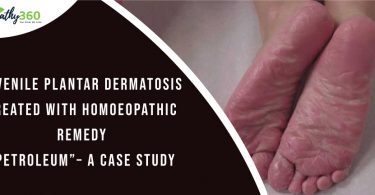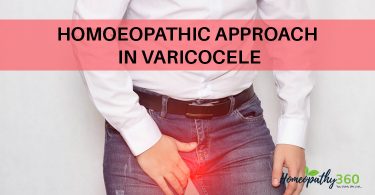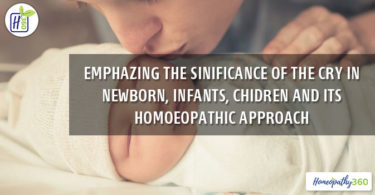Abstract
Doctrine of signature is a visual clue provided by God or just a superstition. It has been a debatable topic. Apart from the doctrine of signature, the natural behaviour, toxicological action and physiological action of the substance is also a part of the study to understand the hidden utility of the substance as a therapeutic agent. This article attempts to explore an integrated approach for the complete understanding of the therapeutic agent.
Abbreviations:
G.I tract- Gastro Intestinal Tract,
Na- Sodium,
Cl- Chloride,
NaCl- Sodium Chloride,
SOA- Sphere of Action
Introduction
The Doctrine of signature, ‘signs of nature’, for long has been considered as visual clue provided by God to the hidden utility of the therapeutic substance. There is no scientific evidence that the shape and colour of plants help to discover its therapeutic utility. Thus, instead of considering only the doctrine of signature, the natural behaviour, physiological action and therapeutic action, gives a better understanding of the therapeutic agent. The final court to ascertain their medicinal powers are to observe those changes of health medicine is capable of producing in the healthy organism.
Integrated approach for complete understanding
To have a complete understanding of the therapeutic agent, an example from plant animal and the mineral kingdom is taken; its natural behaviour, physiological action and toxicological action are interpreted and co-related with the evidence available in source books
The following table represents remedies from plant, animal and mineral kingdom; in their natural behaviour, physiological action and toxicological action.
Tarantula hispanica
| Sr. no | Data (biology- natural behaviour, physiology- physiological action, poisoning- toxicological action) |
Interpretation derived from the data | Evidence: Source- Book (symptoms- from Materia Medica, Hering’s guiding symptom, Allen’s encyclopedia, Prisma) |
| A | Natural Behaviour | ||
| 1 | Spider has 8 legs and is in constant motion, Rhythmic |
Patients are always restless- rhythmic | The restlessness of hands and legs; |
| 2 | Coloration | Fascination for bright colour | Colours dark desire for |
| 3 |
Strategy for survival –trick and trap | Patients are cunning and deceptive in their behaviour Sensitive to being trapped |
Cunning Deceitful |
| 4 | Sense organ sharp | Patients hypersensitive – (pain/noise/ touch/ light /vibration) | Hypersensitive |
| 5 | Web sticky, others do not come near/ touch | Sensitive to interaction <touch Loneliness |
Sensitive to touch |
| 6 | Fear of being preyed | Fear- danger, fear- death | Fear dark |
| B | Toxicology | ||
| 1 | Local irritation-inflammation Skin, G.I Tract Pain, violent-stinging |
Inflammation Pain: violent-stinging |
Irritation Redness Burning Swelling Pain-stinging type Pain intense |
| 2 | Stimulant action Mind and Nervous system- melancholia, delirium, involuntary movements, hysteria, chorea, convulsion, hyperesthesia, Sexual desire++ |
Excitability- Mind and Nerves Depression |
Depression Hysteria Delirium Twitching- chorea Convulsion Hyperesthesia Sexual desire ++ |
| 3 | Paralytic action | Paresis, Paralysis | Paretic condition, paralysis |
| 4 | Constriction Circular, cardiac muscle fibre |
Angina pectoris | Heart region: pain, constriction, breathlessness |
| 5 | Necrosis | Septic condition | Evidence are directly available in source book |
| 6 | Destruction-Degeneration Blood, Bone |
Haemorrhage Caries |
Evidence is directly available in source book |
Natrium muriaticum
| Sr. no | Data | Interpretation | Evidence : Source- Book |
| A | Natural Behaviour | ||
| 1 | Na belongs to group IA and Cl (Halogen group). Na has only one electron in the outermost shell, hence to complete the octate state it has to give away the electron or share 7 electrons, which it does with Cl to form a NaCl bond. Na+ Cl – [affinity towards Cl] |
Independent and dependable. Attachment-Relationship Specific towards a person Fear of being alone |
One- to – one attachment Company desire for, alone agg |
| B | Physiological | ||
| 1 | Maintains Osmotic pressure, volume and composition of extracellular fluid compartments Electrolyte and fluid balance |
Sphere of action (SOA)- intracellular and extracellular fluid, blood |
Dryness of mucous membrane |
| 2 | Neuromuscular conductivity | (SOA)Nerves | |
| 3 | Cardiac rhythmicity and peripheral resistance of blood vessels | (SOA) Heart & circulation |
Palpitation, with faintness |
| 4 | Muscle relaxation and contraction | (SOA) Muscles | Contraction of muscles |
| C | Toxicology | ||
| 1 | Electrolyte imbalance (irritability, increased thirst) |
Irritability |
Irritability Thirst increased |
| 2 | Depression of sensorium (confusion, coma) |
Confusion Coma |
Confusion Comatose |
| 3 | Paralytic action (muscle spasticity , focal deficits) |
Paralysis : muscle, tissue, organ | Paretic condition Paralysis |
| 4 | Laboured respiration | Breathlessness | Difficult respiration |
Zincum metallicum
| Sr. no | Data | Interpretation | Evidence : Source- Book |
| A | Physiological action | ||
| 1 | CNS and Mind | Excitement |
Hypersensitive – nervous system |
| 2 | Skin Helps in protein synthesis and metabolism |
Hair growth and wound healing | Effectual in securing rapid healing |
| 3 | Blood Increases oxygen affinity of haemoglobin |
Impaired- Anemia |
Impaired- Anemia |
| 4 | Eye :Uveal tract | Deficiency- (keratitis) | Deficiency-Inflammation |
| 5 | Ossification | Impaired – growth retardation, osteoporosis | Joint pain |
| 6 | Reproductive system Development of secondary sexual character |
Deficiency- Inhibits sexual maturation |
Sexual neurasthenia |
| B | Toxicology | ||
| 1 | Stimulant action CNS and Mind |
Excitability and Irritability | Irritability, convulsion |
| 2 | Paralytic action | Paresis, paralysis | Paralysis , muscular incordination, imbalance |
| 3 | GIT Irritation, Inflammation, ulceration |
Nausea, vomiting, diarrhoea, abdominal pain, gastric ulcer | Nausea, vomiting, diarrhoea, abdominal pain |
Pulsatilla partensis
| Sr. no | Data | Interpretation | Evidence : Source- Book |
| A | Natural Behaviour | ||
| 1 | Grows in dessert, needs less water | Dryness of mouth and thirst less | Dryness of mouth thirst less |
| 2 | Flowers are drooping downwards | Shyness | Timid |
| 3 | Flowers are always in a group | Company desires | Company desire for |
| 4 | Flowers are delicate so they change direction with a draft of wind | Sensitive Changeability |
Impressionable Mood changeable |
| 5 | The stem of the flower is delicate and covered with hair like structure to protect it from wind in chilly phase |
Sensitive to a draft of air Needs covering in open air |
< draft of air Desire open air, covers in open air |
| B | Toxicology | ||
| 1 | Local irritation Skin, GI tract |
Nausea, vomiting diarrhoea | Nausea, Vomiting, Diarrhoea |
| 2 | Hypotension Coma |
Faintness attack Coma |
Faintness Comatose |
| 3 | Female genitor-urinary tract Induces abortion, uterine contraction |
Abortion Dysmenorrhoea, Metrorrhagia |
Abortion tendency to Contraction hourglass |
The doctrine of signature, natural behaviour, physiological action toxicological action and observation those changes of health the therapeutic agent is capable of producing in the healthy organism gives a complete understanding of the therapeutic agent. Thus, instead of evaluating their role separately and debating about it, an integrated approach must be used.
Conclusion
Studying each entity separately and debating about its usefulness might not help us in understanding the complete picture.
Thus, an integrated approach- doctrine of signature, natural behaviour, physiological action, toxicological action and drug proving together gives a complete understanding of the therapeutic agent.
Bibliography
- Bailey, Philip. Homoeopathic Psychology, the personality profiles of the major constitutional remedies. New Delhi: Jain Publisher;2002
- Craft S.F. Doctrine of Signature and colonial medicine [Internet]. 2015 October, 31[Cited 2018 September 10]. Available from: http://: www.hhhistory.com
- Dhawale. M. L. I.C.R Symposium Volume on Hahnemann Totality, Area F – Artificial Drug Disease: Perceiving, Girgaon, Mumbai: M. L. Dhawale Memorial Trust Publisher; 2003.Pg.No. F 37 – F187.
- Hahnemann S .reprint 6th editionOrganon of Medicine. New Delhi: B. Jain Publishers Pvt Ltd;1998 110-114.
- C. Hering, The Guiding symptoms of our Materia Medica, New Delhi: B. Jain Publishers Pvt Ltd. Pg. No- 600-1000
- Franz. Vermeulen, Prisma: the arcana of material medica illuminated.2nd edition (2002). Emryss Bv Publishers.
- Kasad, K. N.Post-Graduate Teachings in Homoeopathy: Homoeopathic Materia Medica, Published in “Transactions of International Homeopathic Congress1967, of the International Homoeopathic League”. (Pg 44-54)
- Sankaran R. The Soul of Remedies, Mumbai: Narayan publishers;1997.
- T. F. Allen.The encyclopaedia of pure material medica. New Delhi: B. Jain Publishers Pvt Ltd. Pg No. 612, 791, 696, 845.
- Neuman E. What is Doctrine of Signatures? [Internet]. 2013 December, 11 [Cited2018 September, 10]. Available from: http://www.Homoeopathy West .com.
- Vithoulkas G. The Essence of Materia Medica. New Delhi: B Jain Publishers;1988





